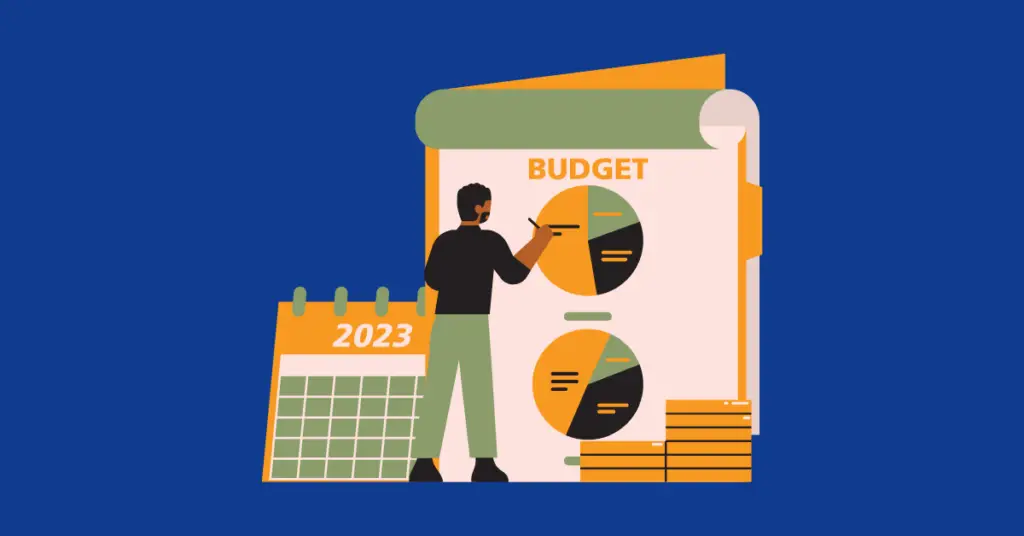Budgeting is a crucial element of financial planning that helps businesses allocate resources, control costs, and optimize performance. Implementing effective budgeting practices is key to ensuring that your business remains on track to meet its financial goals. In this article, we’ll explore eight budgeting practices that can help you streamline your financial management and improve your bottom line.
1. Set Clear and Measurable Financial Goals

One of the most important steps in creating a budget is setting clear, measurable financial goals. Without specific targets, it’s challenging to determine whether your business is on track to succeed or not. When setting goals, make sure they are SMART: Specific, Measurable, Achievable, Relevant, and Time-bound.
For instance, instead of saying “We need to increase revenue,” a SMART goal would be “We aim to increase revenue by 15% in the next quarter through new product launches and marketing efforts.” By establishing clear financial objectives, you can allocate resources more efficiently and monitor your business’s progress against these targets.
2. Monitor and Adjust Your Budget Regularly
Budgets should never be set in stone. To make your budgeting process more effective, ensure that it is flexible and adaptable. Regularly monitoring your budget allows you to identify deviations from expected performance early on. This practice gives you time to adjust your strategies before the deviations impact your financial health significantly.
Businesses should review their budgets monthly or quarterly, depending on the size and complexity of the organization. Compare your actual results with the budgeted amounts to spot trends, inefficiencies, or areas where you can improve.
3. Include Contingency Planning in Your Budget
Every business faces unexpected events or financial uncertainties that can disrupt operations. One critical budgeting practice is to allocate funds for contingencies. These reserves can act as a buffer in case of unforeseen events, such as economic downturns, equipment breakdowns, or supply chain disruptions.
A good rule of thumb is to set aside a portion of your budget—typically 5-10% of your total expenses—for emergencies. By including a contingency fund, you ensure that your business is prepared to navigate through financial challenges without derailing your entire budget.
4. Separate Fixed and Variable Costs
Understanding the difference between fixed costs and variable costs is key to managing your budget effectively. Fixed costs, such as rent, insurance, and salaries, remain constant regardless of business activity. On the other hand, variable costs like raw materials, utilities, and shipping fluctuate with the level of production or sales.
Accurately categorizing your expenses helps you forecast your cash flow more effectively and make better financial decisions. During periods of increased demand, variable costs may rise, and your budget should reflect this. By separating these costs, you can create a more dynamic and responsive budget that reflects your business’s financial reality.
5. Leverage Technology for Budgeting and Forecasting

One of the most efficient ways to improve your budgeting process is by leveraging technology tools for budgeting, forecasting, and financial management. Many accounting software programs offer robust budgeting features, enabling businesses to automate expense tracking, generate reports, and forecast future performance.
Using tools like Vencru, allows you to keep your financial data centralized and updated in real-time. This makes it easier to monitor your performance against the budget, adjust allocations as needed, and forecast upcoming financial trends with accuracy.
6. Engage Key Departments in the Budgeting Process
A top-down approach to budgeting—where management sets the budget without input from individual departments—can lead to inefficiencies or unrealistic expectations. Instead, consider adopting a collaborative budgeting process that involves key stakeholders from different departments.
By involving team members who are closest to the operational aspects of the business, you ensure that your budget reflects the needs and realities of each department. This not only improves buy-in from employees but also helps avoid unexpected expenses that may arise from departments being underfunded.
7. Conduct Regular Financial Reviews and Reforecasting
Budgeting is not a one-time event but an ongoing process. Conducting regular financial reviews ensures that you are meeting your targets and allows for timely adjustments. This practice, known as re-forecasting, involves updating your budget based on actual performance data and adjusting your projections to reflect changing circumstances.
Reforecasting should occur at least quarterly, or more frequently during periods of rapid growth or market changes. This helps businesses stay agile and responsive, ensuring that their budgets remain relevant throughout the year.
8. Use Zero-Based Budgeting for Better Resource Allocation
Zero-based budgeting (ZBB) is a powerful technique for controlling costs and improving resource allocation. Unlike traditional budgeting, which starts with the previous year’s budget and makes adjustments, zero-based budgeting starts from scratch. Every expense must be justified for each new period, forcing departments to critically assess their needs.
By using ZBB, businesses can eliminate inefficiencies, unnecessary spending, and outdated assumptions. This practice encourages managers to focus on priority projects and initiatives that generate value, making it an excellent tool for organizations looking to optimize their spending.
Conclusion
Effective budgeting practices are crucial to the success and growth of any business. By setting clear financial goals, regularly reviewing and adjusting your budget, preparing for contingencies, and leveraging technology, you can create a budgeting process that supports long-term sustainability.
Remember that budgeting is not a static exercise but a dynamic process that should evolve with your business. Following these eight budgeting best practices will help you better manage your resources, control costs, and achieve financial success.
Manage your Inventory and Accounting Processes with Vencru today!
Related Content






